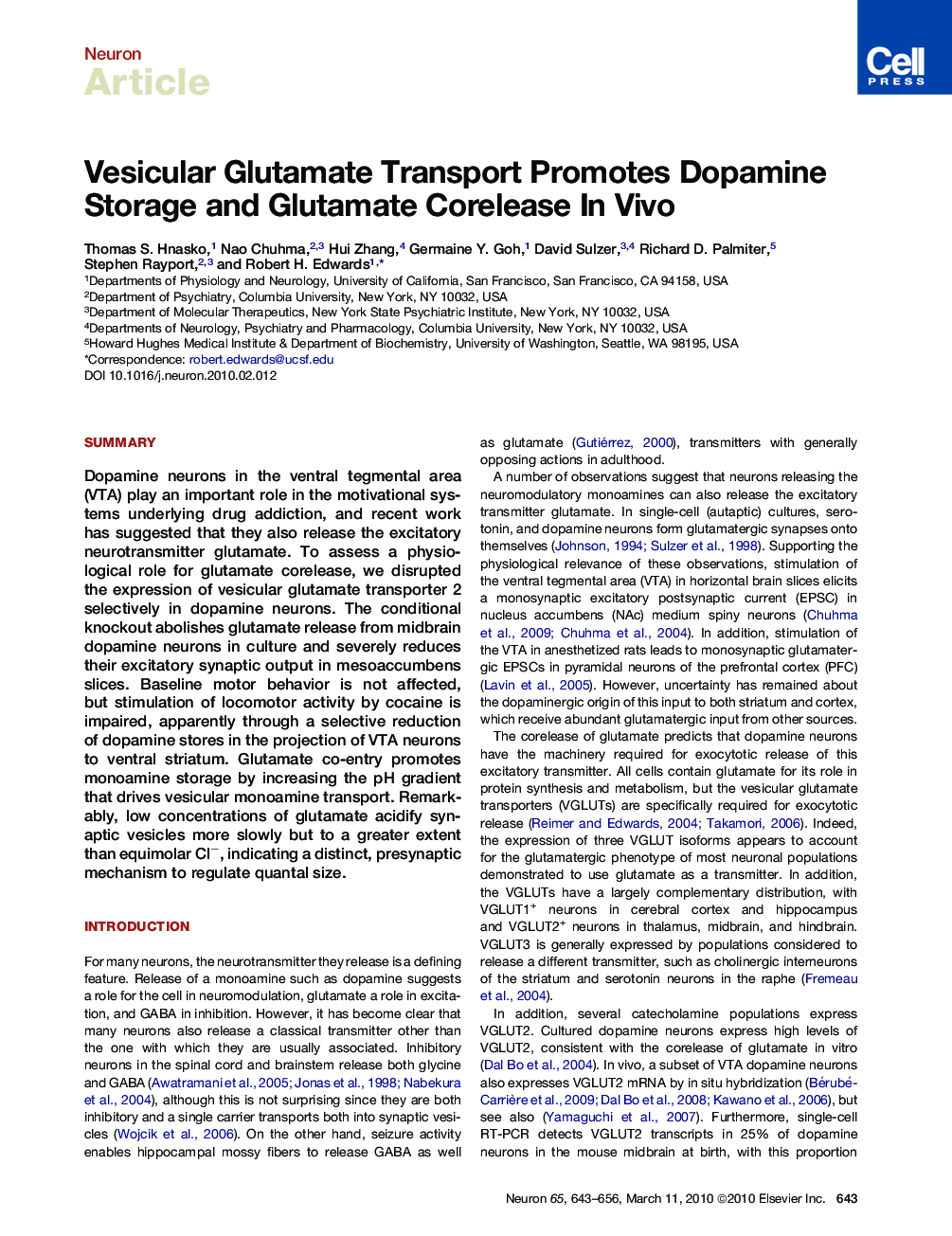| Article ID | Journal | Published Year | Pages | File Type |
|---|---|---|---|---|
| 4322556 | Neuron | 2010 | 14 Pages |
SummaryDopamine neurons in the ventral tegmental area (VTA) play an important role in the motivational systems underlying drug addiction, and recent work has suggested that they also release the excitatory neurotransmitter glutamate. To assess a physiological role for glutamate corelease, we disrupted the expression of vesicular glutamate transporter 2 selectively in dopamine neurons. The conditional knockout abolishes glutamate release from midbrain dopamine neurons in culture and severely reduces their excitatory synaptic output in mesoaccumbens slices. Baseline motor behavior is not affected, but stimulation of locomotor activity by cocaine is impaired, apparently through a selective reduction of dopamine stores in the projection of VTA neurons to ventral striatum. Glutamate co-entry promotes monoamine storage by increasing the pH gradient that drives vesicular monoamine transport. Remarkably, low concentrations of glutamate acidify synaptic vesicles more slowly but to a greater extent than equimolar Cl−, indicating a distinct, presynaptic mechanism to regulate quantal size.
► VGLUT2 mediates glutamate corelease by dopamine neurons in vivo ► Vesicular glutamate transport increases dopamine storage and release ► Glutamate and chloride acidify synaptic vesicles through distinct mechanisms ► Glutamate produces a more stable synaptic vesicle pH gradient than chloride
